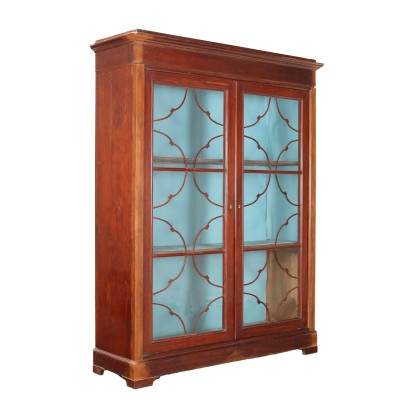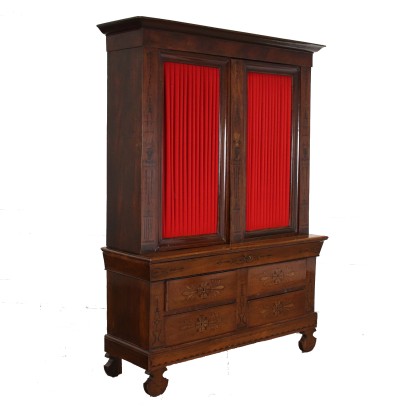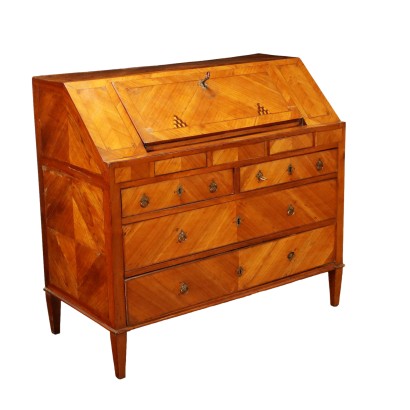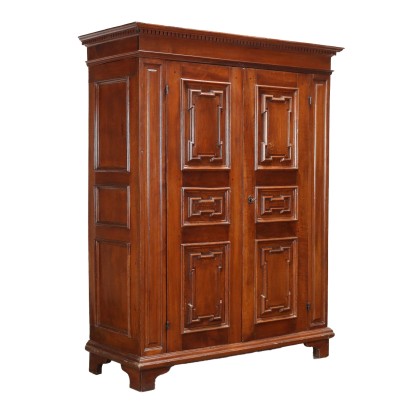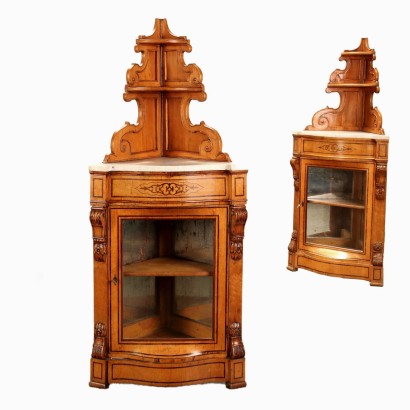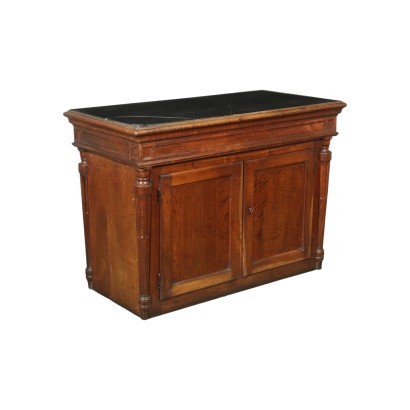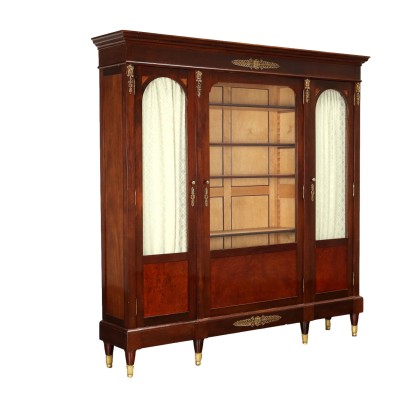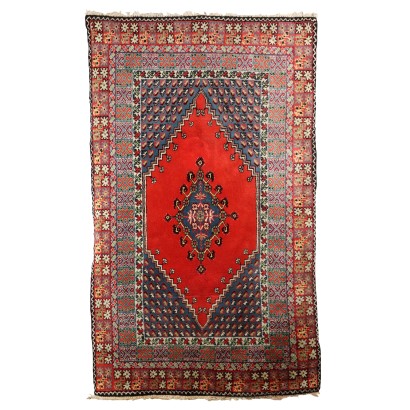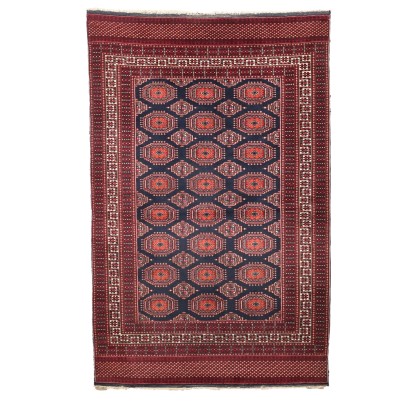Victorian Style Showcase Mahogany Italy XIX Century - Livorno Mid 19th century
Features
Style: Victorian (1830-1900)
Age: 19th Century / 1801 - 1900
Origin: Livorno, Toscana, Italy
Main essence: Silver Fir , Mahogany , Pine
Material: Blown Glass
Description
Tuscan showcase English model in mahogany, Livorno mid 19th century. Pair of doors on the front with blown glass marked by ornamental mahogany slats to compose rhomboidal reserves in relief. Interior in pine and spruce. Lack of a splint.
Product Condition:
Product that due to age and wear requires restoration and resumption of polishing.
Dimensions (cm):
Height: 227,5
Width: 180
Depth: 55,5
Additional Information
Style: Victorian (1830-1900)
This refers to one of the predominant styles used during the Victorian era.
Like the latter, it roughly refers to the duration of the reign of Queen Victoria (20 June 1837 - 22 January 1901), from which it took its name.
Characterized by a great expansion of the home furnishing market and by new mechanized production possibilities, but not by great aesthetic innovations, but by the revival of stylistic elements from various previous eras.
Find out more about the Victorian style with our insights:
Writing desk, Arthur Blain, Liverpool c. 1840
Age: 19th Century / 1801 - 1900
19th Century / 1801 - 1900 Main essence:
Silver Fir
Soft coniferous wood, used for rustic furniture or to build the chest, that is the structure, of furniture then veneered in more precious woods. It has been used since ancient times, its most valuable use is, in the Spruce variant, in the inlays of French antique furniture of the '700 . The spruce, more typical of northern Europe, in Italy grows mainly in the Eastern Alps at altitudes above 1300 m. The noblest use of this essence was in the construction of violins, guitars and cellos: Stradivari himself produced his famous violins with this wood.
Mahogany
It is one of the most precious and sought-after woods in cabinet making. It was discovered in Central America around 1600 and began to be imported to England in the 1700s. Much appreciated for its hardness and indestructibility, it became widespread following the blocking of walnut exports from France in 1720 and the consequent elimination of English import duties on mahogany from the colonies in America and India. The most valuable version comes from Cuba, but it became very expensive. At the end of the 18th century it began to be used also in France in Louis XVI, Directory and Empire furniture, its diffusion declined starting from when Napoleon, in 1810, forbade its import. It was generally used in the manufacture of elegant furniture, due to its characteristics and beautiful grain.
Pine
The term pine wood indicates the essence from various species of conifers, especially Scots pine, maritime pine and pinea pine. Used since ancient times for the most common furniture, with the advent of the veneer technique, in the 1600s, it was widely used in the construction of the structure of even luxury furniture, which were then covered, decorated (in Venice) or gilded ( in England). It has a color that varies from white to yellow with reddish hues and can be both very soft and very hard.
Material: Blown Glass
Other customers have searched:



